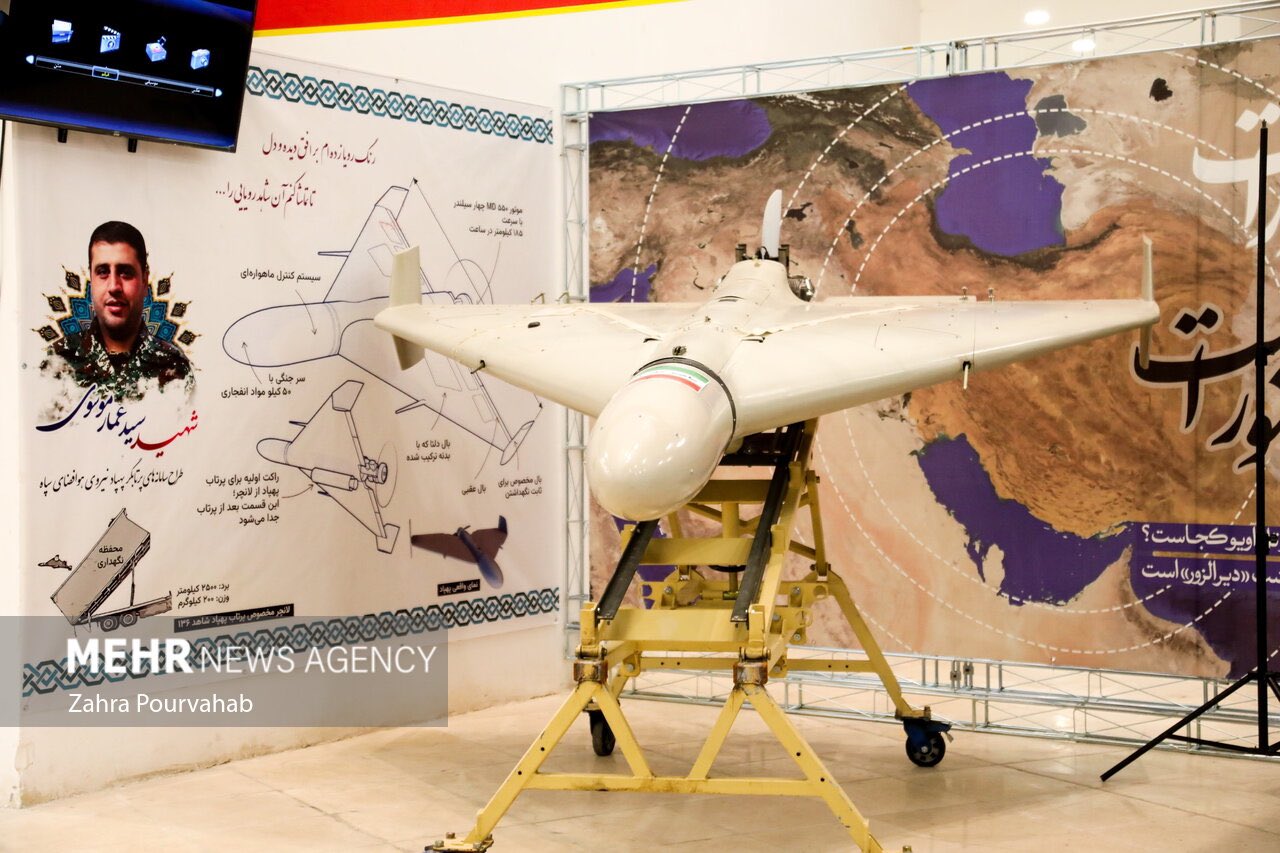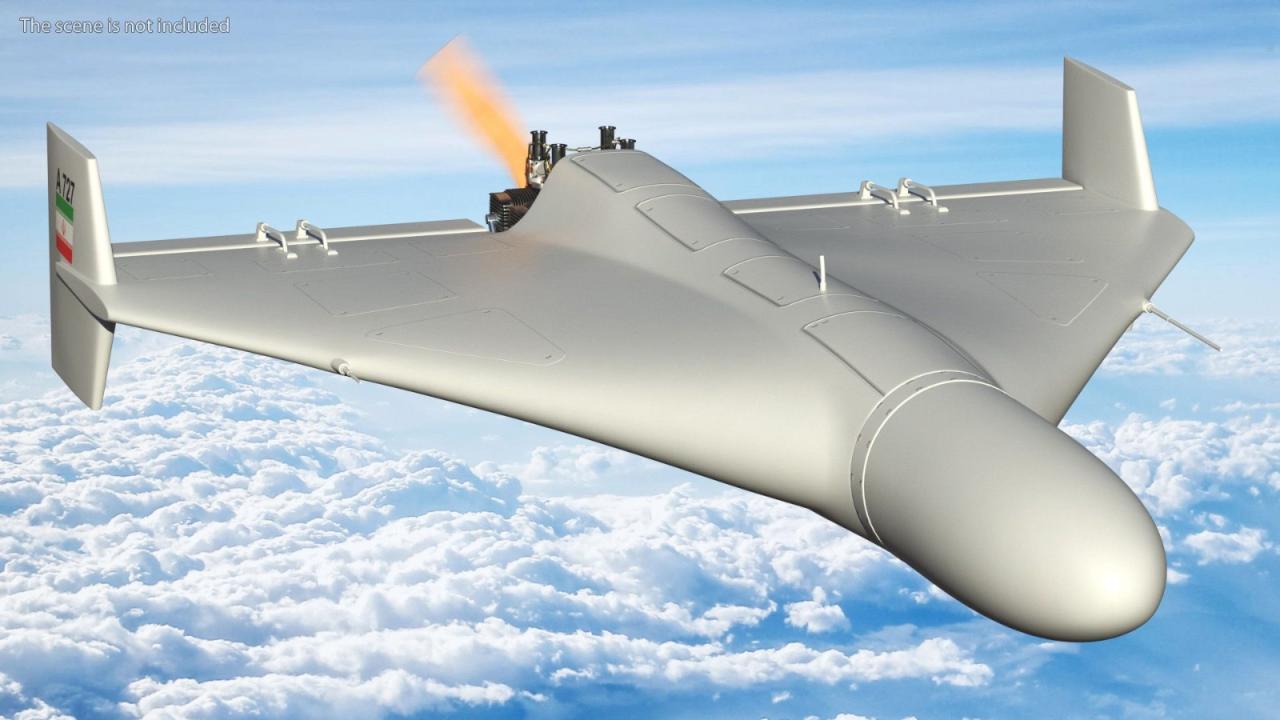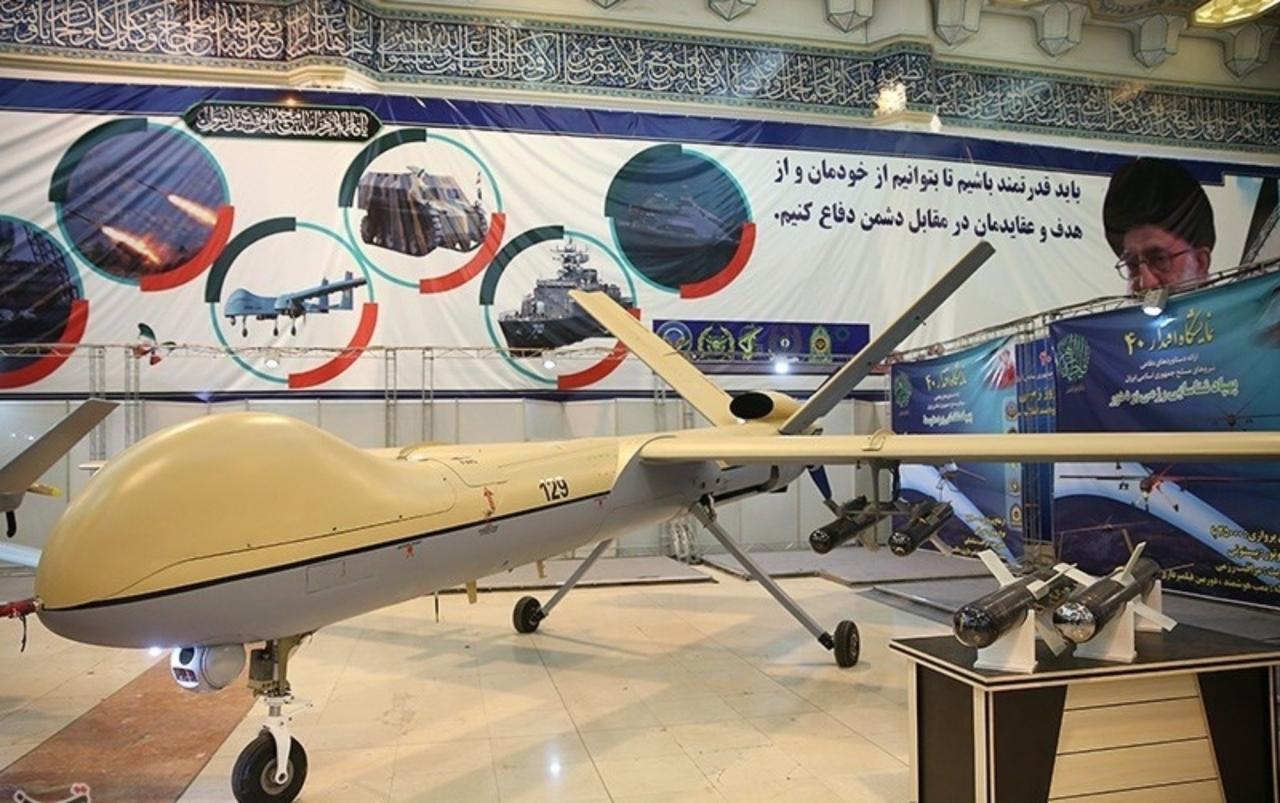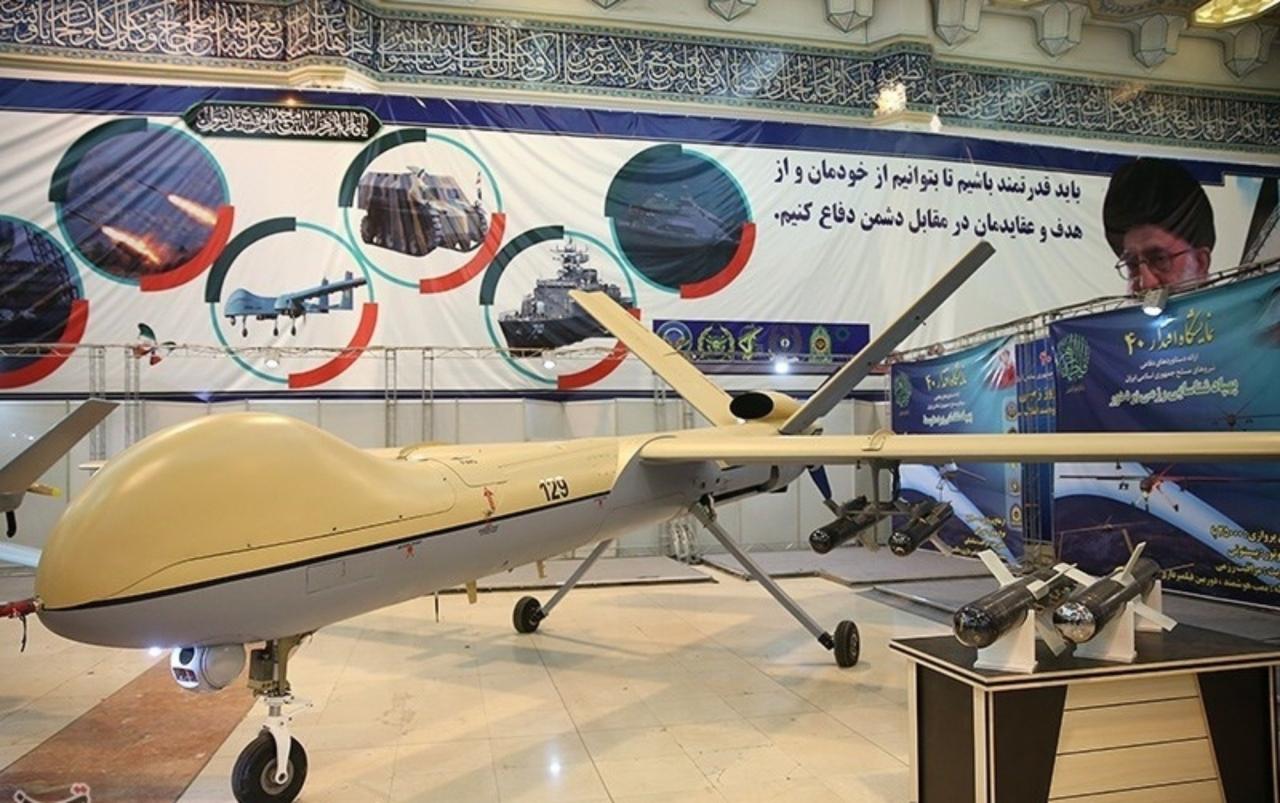Shahed drones have emerged as a significant force in modern warfare, prompting global concern and prompting a need for comprehensive understanding. These relatively inexpensive, readily deployable unmanned aerial vehicles (UAVs) possess surprising capabilities, impacting conflict zones and civilian populations alike. Their operational simplicity, coupled with their destructive potential, has redefined the battlefield, raising complex questions regarding international security and the future of aerial warfare.
This exploration delves into the technical specifications, operational capabilities, countermeasures, geopolitical impact, and manufacturing processes surrounding Shahed drones. We will examine their design, deployment strategies, the effectiveness of counter-drone technologies, and the broader implications of their proliferation.
Shahed Drone: A Comprehensive Overview

The Shahed drone, a relatively low-cost, expendable unmanned aerial vehicle (UAV), has significantly impacted modern warfare. Its proliferation across various conflict zones necessitates a comprehensive understanding of its technical specifications, operational capabilities, countermeasures, geopolitical implications, and manufacturing processes.
Shahed Drone Technical Specifications
The Shahed drone’s design prioritizes simplicity and affordability, resulting in a relatively basic but effective system. Key specifications vary slightly depending on the specific model, but general characteristics can be Artikeld.
The Shahed drone’s relatively low cost and ease of production have made it a significant factor in recent conflicts. Understanding the impact of weather on its operational capabilities is crucial, and resources like the coquihalla weather camera , while geographically distant, offer insights into atmospheric conditions that could affect drone performance. Such data helps assess the Shahed drone’s vulnerability to adverse weather patterns.
| Specification | Value | Specification | Value |
|---|---|---|---|
| Wingspan | Approximately 2 meters | Weight (Empty) | Approximately 200 kg |
| Length | Approximately 3.5 meters | Payload Capacity | Approximately 40-50 kg |
| Materials | Composite materials, including fiberglass and carbon fiber | Engine Type | Small, low-power internal combustion engine |
The propulsion system utilizes a relatively simple internal combustion engine, allowing for extended flight times. Fuel capacity varies depending on the mission profile, directly impacting flight endurance. Guidance relies on a combination of inertial navigation and GPS, though precision is not as high as more advanced systems. Communication is primarily achieved through radio links.
Shahed Drone Operational Capabilities

Shahed drones are typically deployed from land-based launchers, often requiring minimal preparation. Recovery is not a standard procedure, as they are generally considered expendable. Operational altitude and speed are moderate, prioritizing range and endurance over high-speed maneuverability. These drones are primarily used against soft targets, such as military bases, infrastructure, and even civilian areas. The warhead is typically a high-explosive fragmentation warhead, designed to maximize casualty and damage within a specific radius.
Shahed Drone Countermeasures
Countering Shahed drone attacks requires a multi-layered approach incorporating both active and passive defense mechanisms.
- Electronic Warfare: Jamming systems can disrupt communication and navigation signals, rendering the drones ineffective.
- Kinetic Countermeasures: High-velocity projectiles or directed energy weapons can physically destroy the drones in flight.
- Cybersecurity Measures: Targeting the drone’s communication systems through cyberattacks can disrupt or disable them.
- Passive Defenses: Camouflage and hardened infrastructure can reduce the effectiveness of attacks.
Exploiting vulnerabilities in the drone’s relatively simple design and reliance on readily-available components presents opportunities for effective countermeasures. The comparison of different counter-drone technologies highlights the effectiveness of integrated systems combining various approaches. Electronic warfare plays a crucial role in disrupting the drones’ operational capabilities, though effective jamming requires sophisticated technology and precise targeting.
Shahed Drone Impact and Implications
The widespread use of Shahed drones has had significant geopolitical implications, altering the dynamics of asymmetric warfare. The impact on civilian populations and infrastructure has raised significant humanitarian concerns.
| Date | Location | Target | Outcome |
|---|---|---|---|
| Example Date 1 | Example Location 1 | Example Target 1 | Example Outcome 1 |
| Example Date 2 | Example Location 2 | Example Target 2 | Example Outcome 2 |
The Shahed drone’s relatively low cost and ease of production have democratized access to drone technology, significantly altering the landscape of modern warfare. Its impact extends beyond the battlefield, influencing geopolitical strategies and raising ethical considerations surrounding the use of inexpensive, expendable weapons systems.
The Shahed drone, known for its relatively low cost and ease of production, has become a significant concern in various conflicts. Recent incidents highlight the growing threat, such as the news report detailing a drone shot down in NJ, as reported here: drone shot down in nj. This incident underscores the need for improved counter-drone technologies to effectively neutralize the Shahed drone threat and similar emerging aerial threats.
Shahed Drone Manufacturing and Supply Chains

The manufacturing and supply chain of Shahed drones involve various entities, including Iranian state-owned companies and potentially international collaborators. The drones utilize readily-available components, reducing reliance on highly specialized parts. The manufacturing process is relatively straightforward, contributing to the drones’ mass production capabilities. The economic implications of Shahed drone production and export are significant, impacting both the Iranian economy and the global arms trade.
The rise of the Shahed drone marks a pivotal moment in military technology. Its affordability and effectiveness have democratized access to aerial warfare, presenting both opportunities and significant challenges for global security. Understanding its capabilities, vulnerabilities, and implications is crucial for developing effective countermeasures and mitigating its devastating potential. Continued research and development of counter-drone technologies, coupled with international cooperation, are essential to address the evolving threats posed by this game-changing technology.
Common Queries: Shahed Drone
What is the range of a Shahed drone?
The range varies depending on the specific model, but generally falls within a range of several hundred kilometers.
How are Shahed drones guided?
Guidance systems vary, but often involve a combination of GPS and inertial navigation systems, potentially aided by operator control.
What type of warheads do Shahed drones use?
Common warheads include high explosives, designed for blast effects against targets.
Are Shahed drones reusable?
No, Shahed drones are typically designed for one-way missions.
